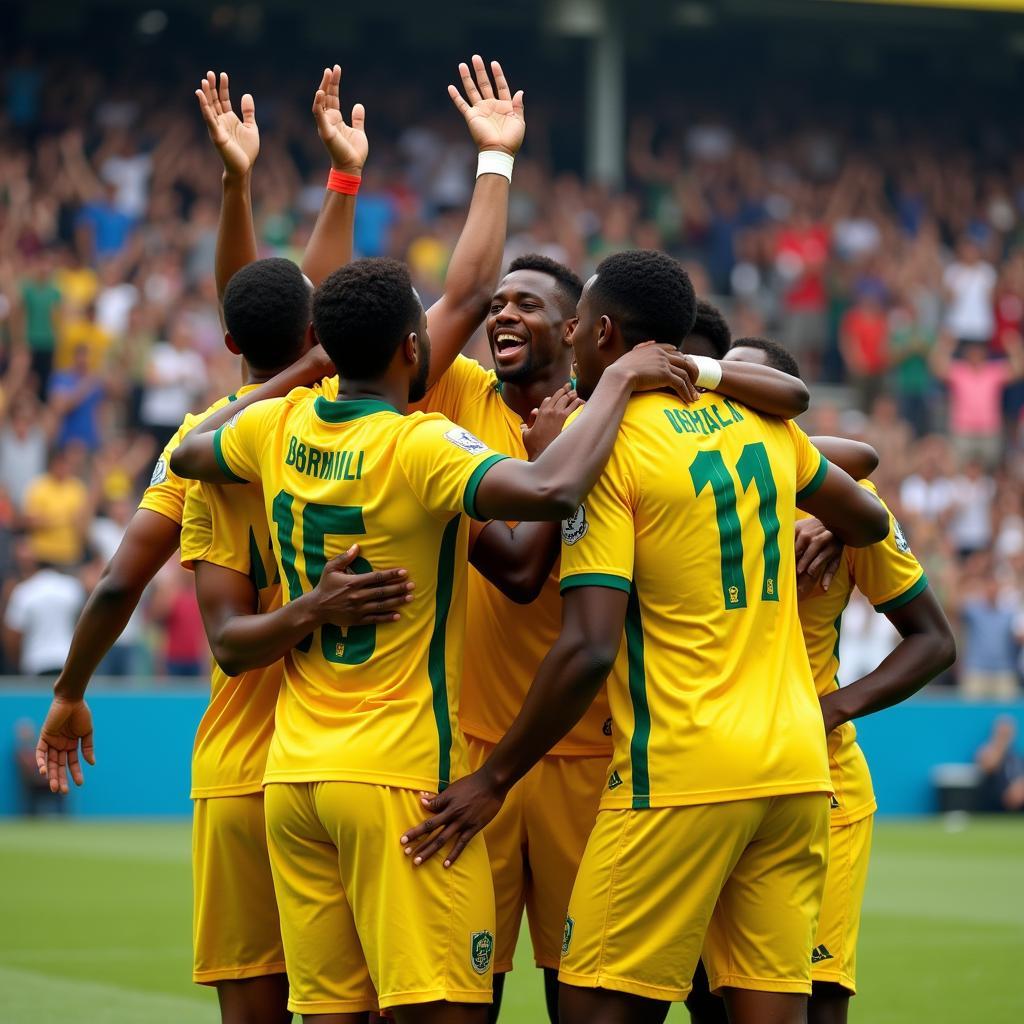African Kuba Pattern Description: Unraveling the Rich Textile Art
The African Kuba pattern is more than just a design; it’s a story woven into the very fabric of Kuba culture. From intricate geometric shapes to bold colors and unique textures, these textiles represent a rich history of artistry and tradition. Understanding the Kuba pattern description involves delving into its symbolism, its meticulous creation process, and its significance within the Kuba Kingdom.
Decoding the Kuba Pattern: A Visual Language
Kuba patterns, primarily found in the Democratic Republic of Congo, are renowned for their complexity and geometric precision. These aren’t just random designs; each motif holds meaning, telling tales of mythology, status, and even personal narratives. The patterns often feature interlocking shapes, stylized animals, and abstract representations of natural elements. Common shapes include squares, diamonds, triangles, and chevrons, often layered and overlapping to create a mesmerizing visual effect. These geometric wonders aren’t simply decorative; they’re a complex visual language that speaks volumes about Kuba culture and history.
Imagine a piece of Kuba cloth, its surface alive with intricate designs. One pattern might depict a stylized crocodile, representing power and strength, while another showcases a series of interlocking squares, symbolizing community and unity. The colors themselves, often rich earth tones, deep blues, and vibrant yellows, add another layer of meaning, often linked to specific rituals or social roles.
The Art of Kuba Cloth Creation: A Meticulous Process
Creating Kuba cloth is a labor of love, involving multiple stages and specialized techniques. Raffia palm fibers are harvested, processed, and woven into the base cloth. Then, the real magic begins. Using a variety of techniques including embroidery, appliqué, and cut-pile, intricate patterns are meticulously added to the surface. The process often involves multiple artisans, each specializing in a particular technique, contributing to the final masterpiece. It’s a testament to the Kuba people’s dedication to their craft and their deep respect for their artistic heritage.
One crucial technique, known as “shody,” involves cutting and folding small pieces of cloth to create a raised, velvety texture. This technique adds another dimension to the patterns, enhancing their visual impact and adding a tactile element to the artwork. The entire process, from harvesting the raffia fibers to the final embellishments, can take months, even years, to complete, resulting in a truly unique and valuable piece of art.
The Significance of African Kuba Pattern Description within the Kuba Kingdom
Within the Kuba Kingdom, these textiles hold immense cultural significance. They are not just beautiful objects; they are symbols of wealth, status, and power. They are used in ceremonies, rituals, and as gifts to mark important occasions. Historically, only royalty and high-ranking officials were permitted to wear certain patterns, further emphasizing their social significance. Understanding the African Kuba Pattern Description allows us to appreciate the deep connection between these textiles and the social fabric of the Kuba people. It’s a glimpse into a world where art and life are intricately interwoven.
Dr. Kabongo Ilunga, a renowned anthropologist specializing in Kuba culture, explains, “Kuba cloth is more than just fabric; it’s a living embodiment of their history, beliefs, and social structures. Each pattern tells a story, and each piece carries the weight of tradition and cultural identity.”
Conclusion: The Enduring Legacy of African Kuba Pattern Description
The African Kuba pattern description is a journey into a world of intricate design, meticulous craftsmanship, and rich cultural significance. These textiles, with their mesmerizing geometric patterns and vibrant colors, are a testament to the artistry and ingenuity of the Kuba people. From their role in social rituals to their representation of history and mythology, Kuba cloths continue to captivate and inspire, reminding us of the power of art to reflect and shape our world. By understanding the stories woven into these textiles, we gain a deeper appreciation for the rich cultural heritage of the Kuba Kingdom.
FAQ
-
What is Kuba cloth made of? Kuba cloth is primarily made from raffia palm fibers.
-
How long does it take to make a piece of Kuba cloth? The process can take anywhere from several months to several years, depending on the complexity of the design.
-
What do the patterns on Kuba cloth symbolize? The patterns can represent a variety of things, including mythology, status, personal narratives, and natural elements.
-
Who traditionally wore Kuba cloth? Historically, certain patterns were reserved for royalty and high-ranking officials.
-
Where can I see examples of Kuba cloth? Many museums around the world have collections of Kuba textiles, and you can also find them for sale through specialized dealers.
-
What are some common colors used in Kuba cloth? Common colors include earth tones, deep blues, vibrant yellows, and blacks.
-
What is the “shody” technique in Kuba cloth making? Shody is a technique that involves cutting and folding small pieces of cloth to create a raised, velvety texture.
Need more assistance? Contact us at +255768904061, email kaka.mag@gmail.com, or visit us in Mbarali DC Mawindi, Kangaga, Tanzania. We have a 24/7 customer service team available.

